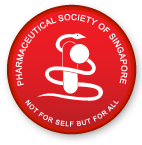Here are some selected news in brief for your quick update.

• OTC Sale of Morning-After Pills Soar
The popularity of the "morning-after" pill has soared in the year since it was approved by the Food and Drug Administration for over-the-counter sales, but its popularity and solid safety record haven't deterred critics from seeking to overturn the ruling. A coalition of conservative groups, including the Family Research Council and Concerned Women for America, has filed a lawsuit in federal court in Washington seeking to reverse the FDA ruling The makers of Plan B project sales of about $80 million for 2007, nearly double the total for 2006, and 8 times more than in 2004, when the product was a prescription-only drug.
• Abortion Pills Don't Raise Pregnancy Risks
A Dutch study finds that women who use abortion pills (mifepristone) rather than the more common surgical method seem to face no greater risk of tubal pregnancy or miscarriage in later pregnancies. An estimated 8% to 10% of the approximately 1.3 million abortions in the United States are done using the pill method.
• Red Meat Diet Linked to Cancer Return: Study
Colon cancer survivors who eat high-fat foods and have diets heavy in red meat are 3 times more likely to suffer a recurrence of the disease or die from it than those who avoid such foods, according to a study in the Journal of the American Medical Association. The study is the first to show how diet affects whether colon cancer returns in people previously treated for it.
• Pain Medicine Use Has Doubled
The retail sale of 5 leading painkillers has nearly doubled over the last 8 years, according to an analysis of statistics from the Drug Enforcement Administration. The figures show the sale of painkillers rose 90% between 1997 and 2005, with oxycodone (OxyContin) being responsible for most of the increase.
• FDA to Update Sunscreen Rules
The Food and Dug Administration has proposed new rules covering the ingredients, labeling, and testing of sunscreens. The rules would also require that sunscreen makers assess the level of both UVA and UVB protection offered in their products. Until recently, most sunscreens sold in the U.S. have filtered out only UVB but not UVA rays - which are associated with more serious and longer-term damage. The sun-protection factor (SPF) rating system will remain in place, while capping product claims at SPF 50, unless supported by further testing. The FDA is expected to finalize the rules by 2009.
**********


